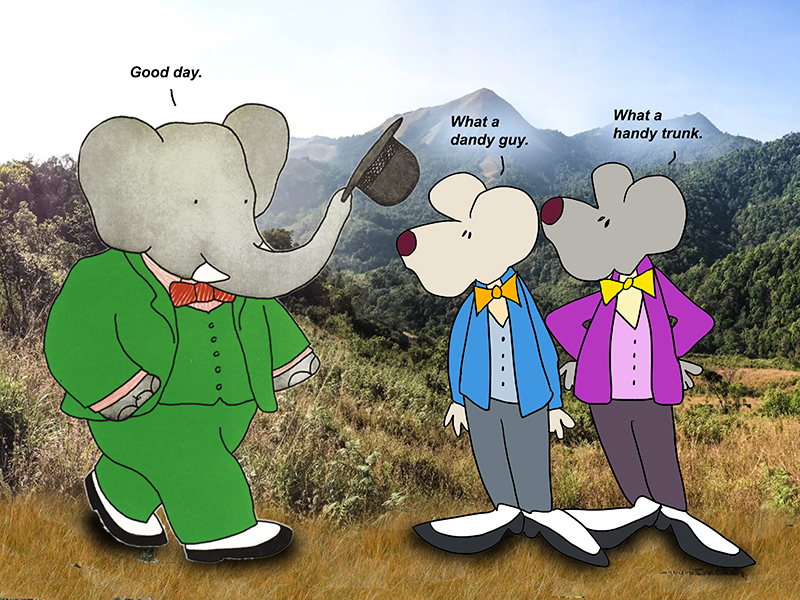I know many of you stay awake nights. Wondering. Just what is a Mughal emperor?
Well. It is a long story, but I’m here to make it short. They built and ruled the Mughal Empire, so let’s roll with that.
But wait. There’s more. The Mughal Empire was located on the Indian subcontinent. They sold donuts there by the half dozen, the kind with the powdered sugar all over them, the ones that leave traces of donut-eating all over your face. Today, this area mainly corresponds to the countries of India, Pakistan, Afghanistan, and Bangladesh. The Mughals began to rule parts of India from 1526, and by 1700 ruled most of the sub-continent. Donuts and all.
They declined rapidly after 1700, and by the 1850s, they were barely there at all. You see, they tried selling lemonade at those little stands on the corner. There were two problems with their business model. One. No traffic on the corners where they put their lemonade stands. Two. No lemons in Indian.
Their founder was named Babur, and he was a Timurid prince from the Fergana Valley (in modern Uzbekistan). Now, for obvious reasons, I see the big pleasant elephant in the green suit, Babar. The big question is, was Babar an African elephant or an Asian elephant. There have been claims he is from Africa, but looking at his ears, it seems impossible to tell. Babar’s wife’s name was Celeste, which sounds neither African or Asian. Either way, they made a fetching elephant couple.
Anyway, he didn’t found the Mughals. Babur did. And he looked nothing like an elephant but more like an Indian. Following his term in office — can you call them terms? I suppose they are called reigns. Either way, after Babur, there were 21 more Mughal emperors throughout history, with the last one being Bahadur Shah II, whose reign ended in 1857. By that time, he had taken on a keen interest in word-search puzzles. The kind where you find words hidden in the big blocks of letters, and you draw little circles around them. That’s all he did on his throne, day and night. Hence, the decline of the kingdom.
But I’m truly not concerned with any of that now. The reason I began wondering all of this is due to the fifth Mughal emperor, who reigned from 1628 to 1658. His name Shah Jahan I. Under his reign, the Mughal Empire reached the peak of its cultural glory. They had ticker-tape parades. No tickers. No convertibles. They just walked along, throwing rice in the air and singing the rubber tree plant song.
Okay. Here is where the story gets sad. Shah Jahan I was married to Mumtaz Mahal, and he loved her like crazy. They decided to have kids, but unfortunately, Mumtaz died during childbirth. That was on this date, June 17, 1631.
So Shah Jahan I spent more than 20 years building her tomb. We know it better as the Taj Mahal. It is probably the world’s most famous mausoleum and also one of the grandest symbols of love and devotion.
It is located on the banks of the Yamuna River. If you look at a map of India, it is in the fattest part of the country, smack dab in the middle. The Mughals used to run big laps around it, racing for those chintzy trophies with the fake gold running guy on top.
Anyway, most of this story is true. Several parts have been slightly embellished to keep things moving.
But the truest thing of all? We don’t need to build temples to show someone we care about them. We can do it, in some little way. Like a smile or a small gesture of kindness. Like handing them a Tootsie Roll for no good reason. Or throwing our coats across some puddle for them to walk on.
Okay, the puddle thing is a dumb idea. Especially if it is a Dry Clean Only coat.
Keep some Tootsie Rolls on hand, instead.
Roll on, baby. Roll on.
============
“Love all, trust a few, do wrong to none.”
― William Shakespeare, All’s Well That Ends Well
===========
“Love is like the wind, you can’t see it but you can feel it.”
― Nicholas Sparks
==========
“Nobody has ever measured, not even poets, how much the heart can hold.”
― Zelda Fitzgerald
===========
Babur. Not Babar. Indian. Not African.
